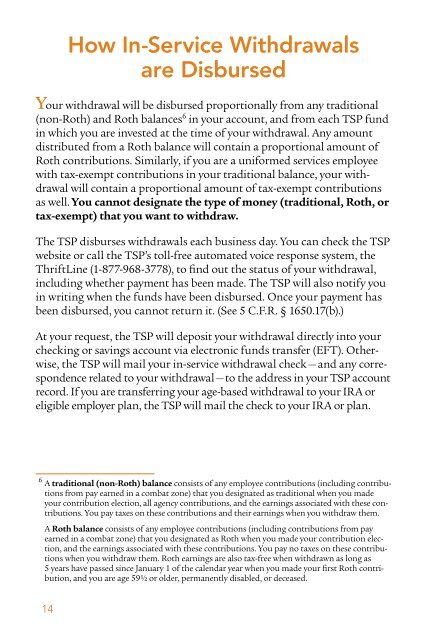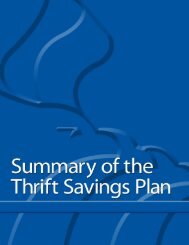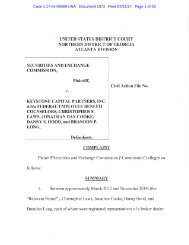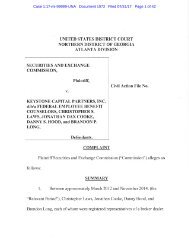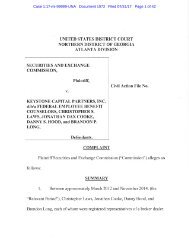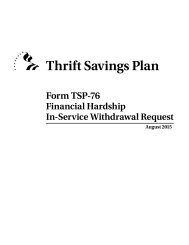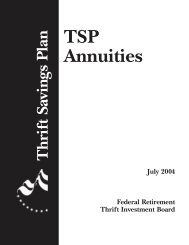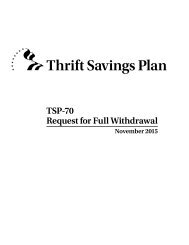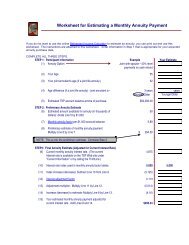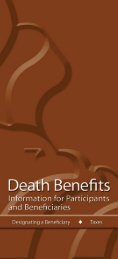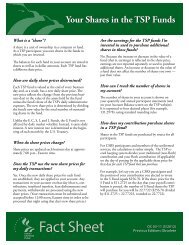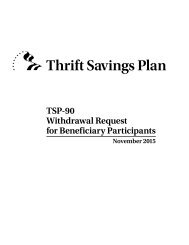In Service Withdrawals (TSPBK12)
Create successful ePaper yourself
Turn your PDF publications into a flip-book with our unique Google optimized e-Paper software.
How <strong>In</strong>-<strong>Service</strong> <strong>Withdrawals</strong><br />
are Disbursed<br />
Your withdrawal will be disbursed proportionally from any traditional<br />
(non-Roth) and Roth balances 6 in your account, and from each TSP fund<br />
in which you are invested at the time of your withdrawal. Any amount<br />
distributed from a Roth balance will contain a proportional amount of<br />
Roth contributions. Similarly, if you are a uniformed services employee<br />
with tax-exempt contributions in your traditional balance, your withdrawal<br />
will contain a proportional amount of tax-exempt contributions<br />
as well. You cannot designate the type of money (traditional, Roth, or<br />
tax-exempt) that you want to withdraw.<br />
The TSP disburses withdrawals each business day. You can check the TSP<br />
website or call the TSP’s toll-free automated voice response system, the<br />
ThriftLine (1-877-968-3778), to find out the status of your withdrawal,<br />
including whether payment has been made. The TSP will also notify you<br />
in writing when the funds have been disbursed. Once your payment has<br />
been disbursed, you cannot return it. (See 5 C.F.R. § 1650.17(b).)<br />
At your request, the TSP will deposit your withdrawal directly into your<br />
checking or savings account via electronic funds transfer (EFT). Otherwise,<br />
the TSP will mail your in-service withdrawal check — and any correspondence<br />
related to your withdrawal — to the address in your TSP account<br />
record. If you are transferring your age-based withdrawal to your IRA or<br />
eligible employer plan, the TSP will mail the check to your IRA or plan.<br />
6 A traditional (non-Roth) balance consists of any employee contributions (including contributions<br />
from pay earned in a combat zone) that you designated as traditional when you made<br />
your contribution election, all agency contributions, and the earnings associated with these contributions.<br />
You pay taxes on these contributions and their earnings when you withdraw them.<br />
A Roth balance consists of any employee contributions (including contributions from pay<br />
earned in a combat zone) that you designated as Roth when you made your contribution election,<br />
and the earnings associated with these contributions. You pay no taxes on these contributions<br />
when you withdraw them. Roth earnings are also tax-free when withdrawn as long as<br />
5 years have passed since January 1 of the calendar year when you made your first Roth contribution,<br />
and you are age 59 ½ or older, permanently disabled, or deceased.<br />
14


